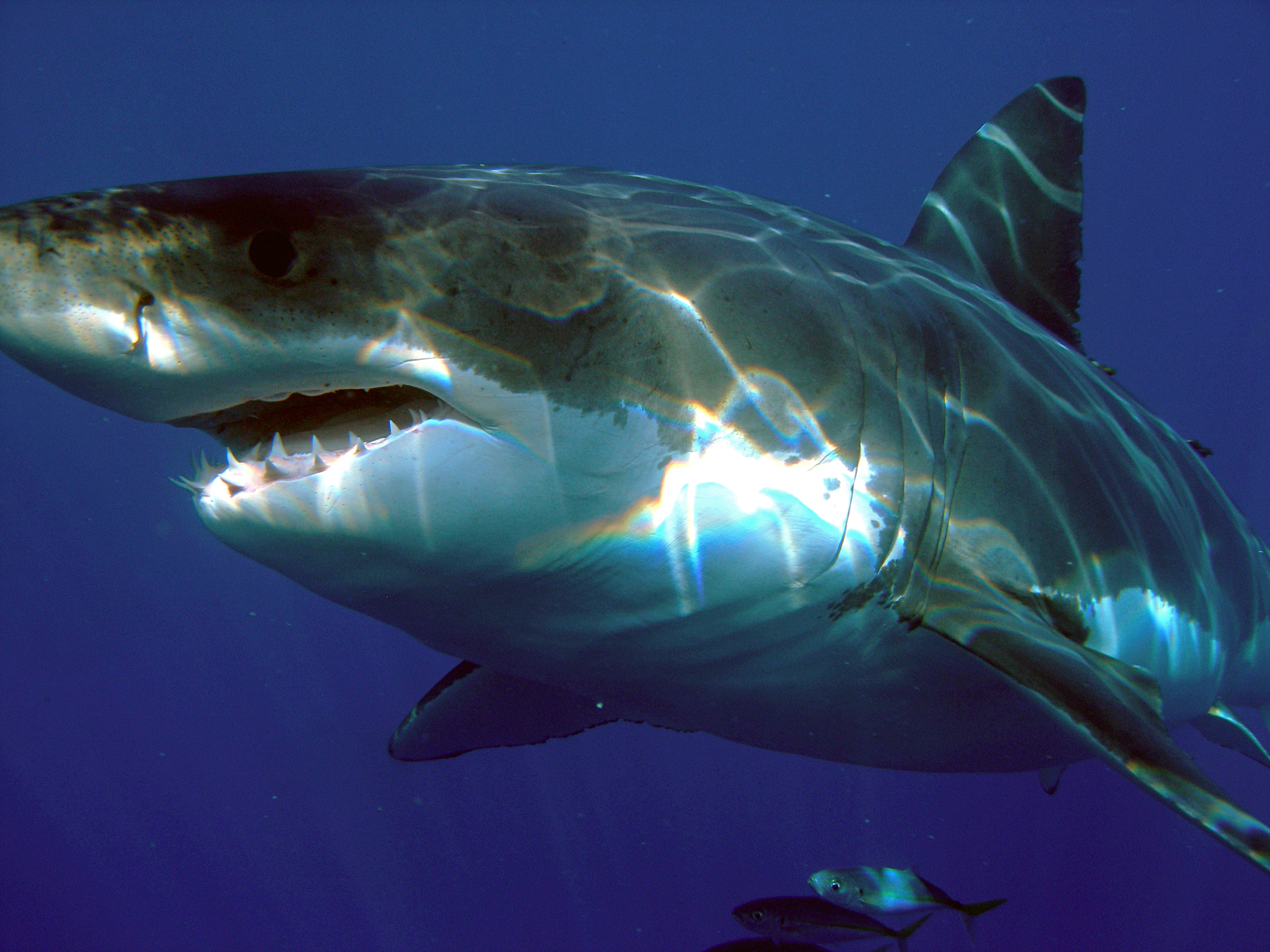Difference between revisions of "AY Honors/Species Account/Carcharodon carcharias/en"
(Updating to match new version of source page) |
(Updating to match new version of source page) |
||
| (One intermediate revision by the same user not shown) | |||
| Line 5: | Line 5: | ||
|image=Carcharodon carcharias.jpg | |image=Carcharodon carcharias.jpg | ||
|description= | |description= | ||
| − | The Great White Shark is that species that made us believe soaking our feet in the tide would bring imminent death in 1975, a kill-rate only paralleled by the aptly named Killer Whale. They reach 26 feet in length, and the heaviest Great | + | The Great White Shark is that species that made us believe soaking our feet in the tide would bring imminent death in 1975, a kill-rate only paralleled by the aptly named Killer Whale. They reach 26 feet in length, and the heaviest Great White ever discovered was 3.4 tons, or 6,800 lbs. This famous species of Shark has a massive grin, revealing hundreds of serrated teeth, and bloodthirstiness unparalleled by any other member of the animal kingdom. The Great White is a willing devourer of any thing from fish to seals to dolphins, squids, turtles, and seabirds. As it ages, the Great Whites tend to lose its speed, and prefers to snack on seals, penguins, and whale cadavers. Great whites can pick up the scent of a single drop of blood in the ocean from 5 miles away. [[https://www.youtube.com/watch?v=qRaJ9p4CWwU Good video]] [[https://www.youtube.com/watch?v=b2obQ4kTNcc Great White snaps shark cage]] [[https://www.youtube.com/watch?v=XCWT-tBLnD8 Great Whites jumping]] |
|range= | |range= | ||
Great white sharks live in almost all coastal and offshore waters which have water temperature between 12 and 24 °C (54 and 75 °F), with greater concentrations in the United States (Atlantic Northeast and California), South Africa, Japan, Oceania, Chile, and the Mediterranean. One of the densest known populations is found around Dyer Island, South Africa, where almost all of the shark research is done. | Great white sharks live in almost all coastal and offshore waters which have water temperature between 12 and 24 °C (54 and 75 °F), with greater concentrations in the United States (Atlantic Northeast and California), South Africa, Japan, Oceania, Chile, and the Mediterranean. One of the densest known populations is found around Dyer Island, South Africa, where almost all of the shark research is done. | ||
}} | }} | ||
<noinclude></noinclude> | <noinclude></noinclude> | ||
Latest revision as of 17:50, 23 September 2021
Great White Shark (Carcharodon carcharias)
Where found: Great white sharks live in almost all coastal and offshore waters which have water temperature between 12 and 24 °C (54 and 75 °F), with greater concentrations in the United States (Atlantic Northeast and California), South Africa, Japan, Oceania, Chile, and the Mediterranean. One of the densest known populations is found around Dyer Island, South Africa, where almost all of the shark research is done.
Description: The Great White Shark is that species that made us believe soaking our feet in the tide would bring imminent death in 1975, a kill-rate only paralleled by the aptly named Killer Whale. They reach 26 feet in length, and the heaviest Great White ever discovered was 3.4 tons, or 6,800 lbs. This famous species of Shark has a massive grin, revealing hundreds of serrated teeth, and bloodthirstiness unparalleled by any other member of the animal kingdom. The Great White is a willing devourer of any thing from fish to seals to dolphins, squids, turtles, and seabirds. As it ages, the Great Whites tend to lose its speed, and prefers to snack on seals, penguins, and whale cadavers. Great whites can pick up the scent of a single drop of blood in the ocean from 5 miles away. [Good video] [Great White snaps shark cage] [Great Whites jumping]

